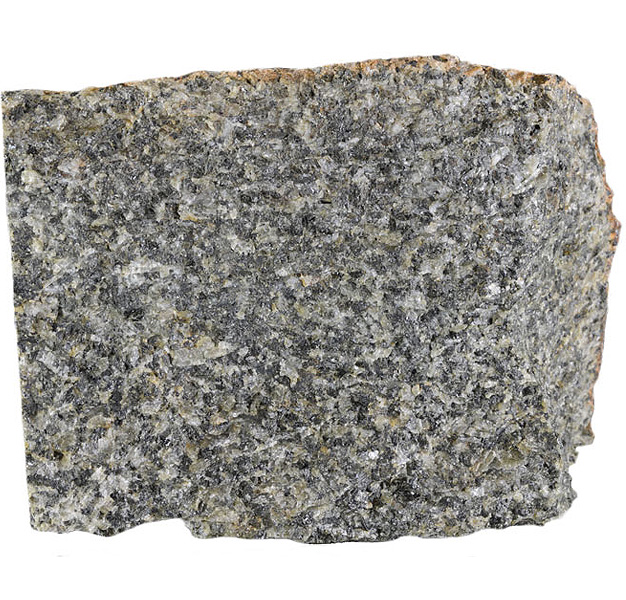
Fact sheet
This ‘Fluxion’ gabbro, so called because the plagioclase grains are aligned to give the appearance of flow, comes from Sithean Mor, and forms part of the Centre 3 complex on Ardnamurchan, Scotland. The complex is one of three centres on the peninsula that were intruded during the Paleogene age North Atlantic volcanic province. The fabrics appear to have formed in a crystal mush, prior to final solidification and have subsequently been affected (mildly degraded) by sub-solidus recrystallization.
The thin section illustrates plagioclase alignment, with laths 1-5 mm in length. Altered pyroxene grains and opaque minerals form the majority of the remainder of the rock with minor biotite
The United Kingdom Virtual Microscope (UKVM) collection consists of igneous, sedimentary and metamorphic rocks from around the UK.
It is intended as a teaching resource, helping to tell the story of the common rock types and how they form, and reflecting the history of the UK at the margins of the continent of Europe. The collection is a series of teaching sets, for example igneous rocks from the North Atlantic Igneous Province and SW England; high-temperature metamorphic rocks from Scotland and low-temperature metamorphic rocks from Wales; and sedimentary rocks, including English limestones and sandstones.






